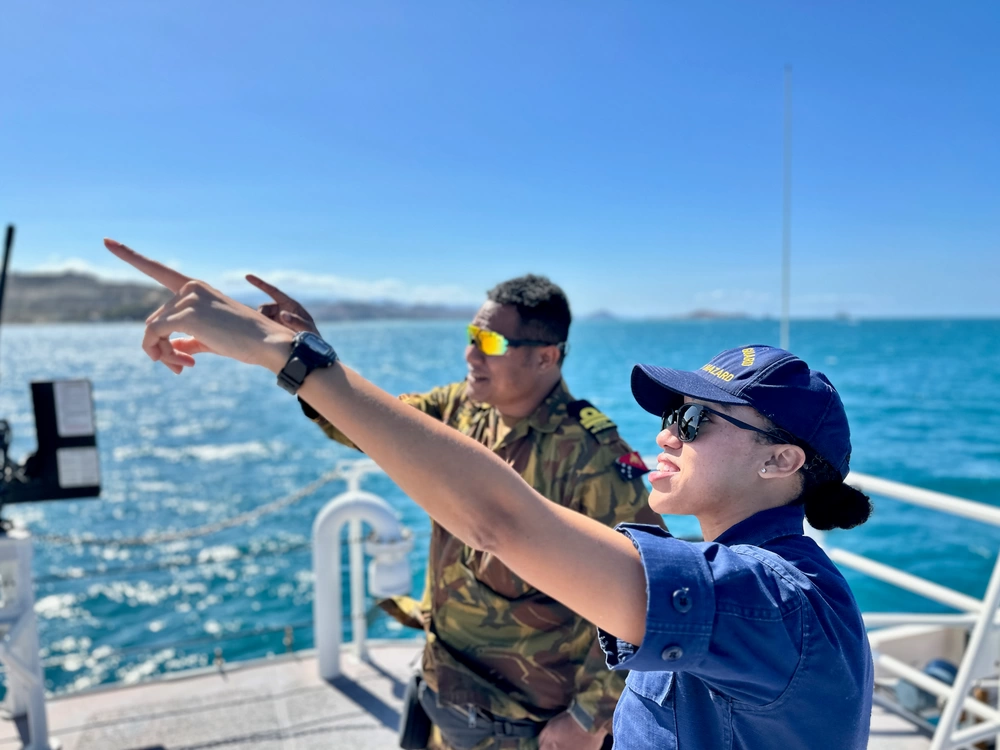Papua New Guinea, being an island nation, heavily relies on its surrounding seas and waters for transportation. Here are some key points regarding transportation by sea in Papua New Guinea:
- Maritime Transport: Maritime transport is the backbone of transportation in Papua New Guinea. Due to the rugged terrain and lack of developed road infrastructure, many coastal and island communities heavily depend on boats and ships for transportation of goods and people.
- Inter-Island Ferries: Inter-island ferries play a vital role in connecting the various islands of Papua New Guinea. These ferries transport passengers, cargo, and vehicles between different islands, facilitating trade and movement of people.
- Coastal Shipping: Coastal shipping services operate along the mainland coast and between the mainland and nearby islands. These services are essential for transporting goods such as food, fuel, and building materials to remote coastal communities.
- Traditional Canoes: In some remote areas, traditional canoes are still used for transportation. These canoes are typically handmade from wood and are used for fishing as well as transportation between nearby villages and islands.
- Cargo Shipping: Cargo ships transport goods in bulk between Papua New Guinea and other countries. Ports such as Port Moresby and Lae serve as major hubs for cargo shipping, handling imports and exports.
- Tourism and Recreation: Papua New Guinea’s pristine waters attract tourists for activities such as snorkeling, scuba diving, and cruising. Small boats and tour operators provide transportation for tourists to explore the country’s diverse marine ecosystems.
Overall, the sea serves as a vital lifeline for transportation in Papua New Guinea, connecting its diverse communities and facilitating trade, tourism, and everyday activities.
Papua New Guinea’s marine borders refer to the maritime boundaries that delineate the extent of its territorial waters, exclusive economic zone (EEZ), and other maritime zones. Here are the key aspects of Papua New Guinea’s marine borders:
- Territorial Waters: Papua New Guinea’s territorial waters extend up to 12 nautical miles (22.2 kilometers) from its baseline. Within these waters, Papua New Guinea exercises full sovereignty, including the right to regulate passage of vessels and exploit marine resources.
- Exclusive Economic Zone (EEZ): Beyond the territorial waters, Papua New Guinea has an exclusive economic zone that extends up to 200 nautical miles (370.4 kilometers) from its baseline. Within this zone, Papua New Guinea has exclusive rights to exploit and manage natural resources, such as fish and oil, as well as the authority to regulate activities like fishing, mining, and research.
- Maritime Boundaries: Papua New Guinea shares maritime boundaries with neighboring countries, including Indonesia to the west and north, the Federated States of Micronesia to the east, and Australia to the south. These boundaries are established through treaties, agreements, and negotiations with neighboring states and are based on principles of international law, including the United Nations Convention on the Law of the Sea (UNCLOS).
- Bilateral Agreements: Papua New Guinea has negotiated bilateral agreements with neighboring countries to define specific maritime boundaries and zones, including the delineation of the continental shelf and the management of shared resources.
- Sovereignty and Jurisdiction: Papua New Guinea exercises sovereignty and jurisdiction over its maritime borders, including the enforcement of laws, regulations, and measures to protect its marine environment, resources, and security interests.
Overall, Papua New Guinea’s marine borders play a crucial role in defining its maritime jurisdiction, rights, and responsibilities, as well as its relationships with neighboring states and the international community.
Vessels are registered and regulated by the National Maritime Safety Authority (NMSA). Here’s an overview of vessel registration in Papua New Guinea:
- National Maritime Safety Authority (NMSA): The NMSA is the government agency responsible for maritime safety, security, and regulation in Papua New Guinea. It oversees the registration and regulation of vessels operating within Papua New Guinea’s waters.
- Vessel Registration Process: Vessel owners or operators must apply for registration with the NMSA to operate legally in Papua New Guinea’s waters. The registration process typically involves submitting various documents, including proof of ownership, vessel specifications, safety equipment certificates, and compliance with maritime regulations.
- Types of Vessels: Papua New Guinea registers various types of vessels, including commercial ships, fishing vessels, pleasure craft, and other types of watercraft. Each type of vessel may have specific registration requirements and regulations.
- Safety and Compliance: Vessel registration in Papua New Guinea is aimed at ensuring safety, security, and environmental protection. Registered vessels are required to comply with national and international maritime safety standards, including regulations set by the International Maritime Organization (IMO) and the International Convention for the Safety of Life at Sea (SOLAS).
- Flag State Control: As the flag state, Papua New Guinea is responsible for enforcing its maritime laws and regulations on vessels registered under its flag, regardless of where they operate. This includes conducting inspections, issuing certificates, and taking enforcement actions to ensure compliance with maritime rules and standards.
- International Cooperation: Papua New Guinea may engage in international agreements and cooperation regarding vessel registration, safety, and security. This includes mutual recognition of certificates, information sharing, and collaboration with other maritime administrations and organizations.
Overall, vessel registration in Papua New Guinea is essential for ensuring maritime safety, security, and regulatory compliance. The NMSA plays a central role in overseeing the registration process and enforcing maritime laws and regulations to protect both the marine environment and the safety of those involved in maritime activities.

Leave a Reply